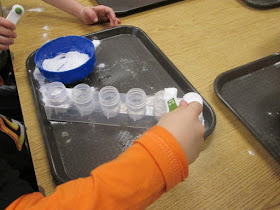None of this was random experimentation. Knowing what ingredients can be substituted, how a recipe can be “tweaked” stems from an underlying understanding of how to bake. Using brown sugar instead of white sugar is one thing, using salt instead of sugar would be something else entirely. I know that I can’t simply leave out the flour, or the eggs, I have to replace them with something else that has similar properties. Baking isn’t just a random combination of trial and error, it’s a science that’s based on knowing what and how different materials interact when combined and heated.
A few weeks ago I wrote about play and learning – that children learn through play, but just because they’re playing, doesn’t
automatically mean that they’re learning. Simply having an experience doesn’t
mean that learning, development, or growth will automatically follow.
Teaching isn’t all that different than baking. Following a curriculum guide word for word, just like following a recipe word for word, interferes with creativity and limits innovation. But at the same time, curriculum, just like a recipe, has some scientific basic for what works and how it works. If you put in a cup of white sugar instead of brown sugar, the consistency might change a little, but you’d still have a cookie. If you put in a cup of salt instead of sugar, your cookies would taste unrecognizable. If you left out the dry ingredients all together, you’d have a puddle that wouldn’t bake into anything. Teaching follows the same principles – just like random materials from our kitchen shelves wouldn’t necessarily bake into a cookie, children’s random activities don’t necessarily lead to learning. Curriculum objectives and standards and teachers’ experiences and professional knowledge are all pieces that contribute to the interactions of intentional teaching. Adults need to be careful not to overwhelm children with our own agendas, but we also need to be confident in our abilities and experience to be true teachers in partnership with children. That’s where the magic of learning happens - when we strike that balance between our sharing our knowledge and helping the children to build theirs.











